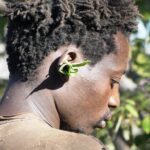We found Hottentotta trilineatus scorpions when camping on a rocky ridge in the Yaeda South area. The place where we put up our tent was about 2 km / 1.2 miles from the next Hadza camp and in the middle of nowhere.
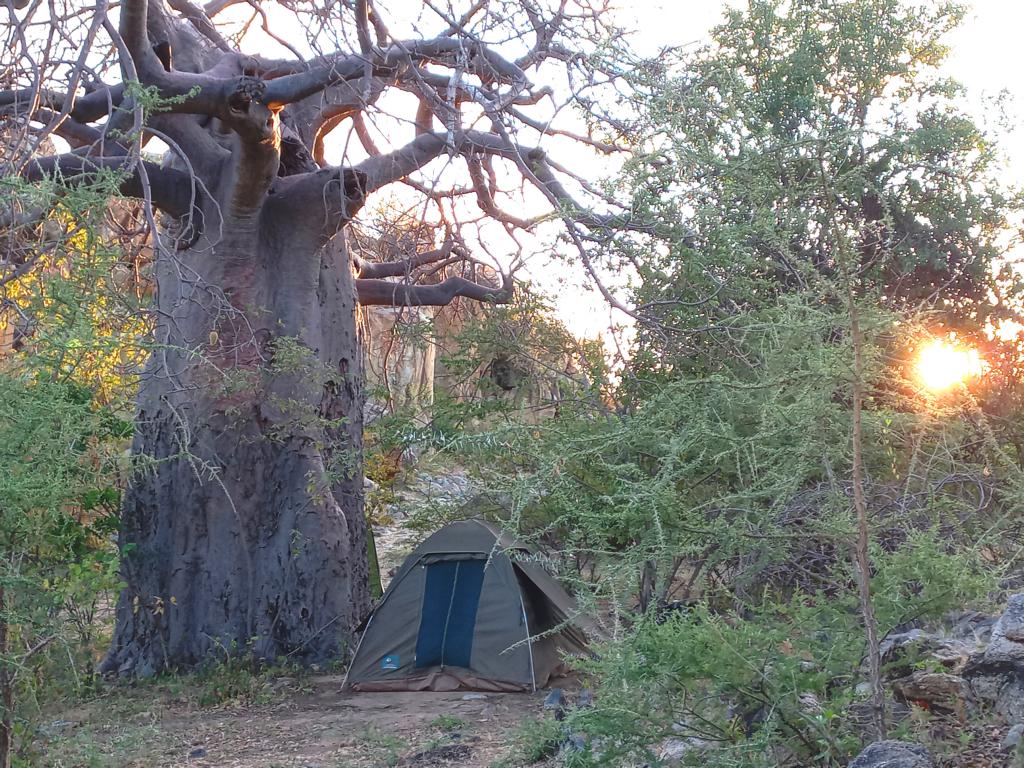
Luckily, we used a UV torch and wore closed shoes when we went from the cooking fire to the tent in the evening. On our way back, we stumbled upon two scorpions. Both had thick tails and small pincers.
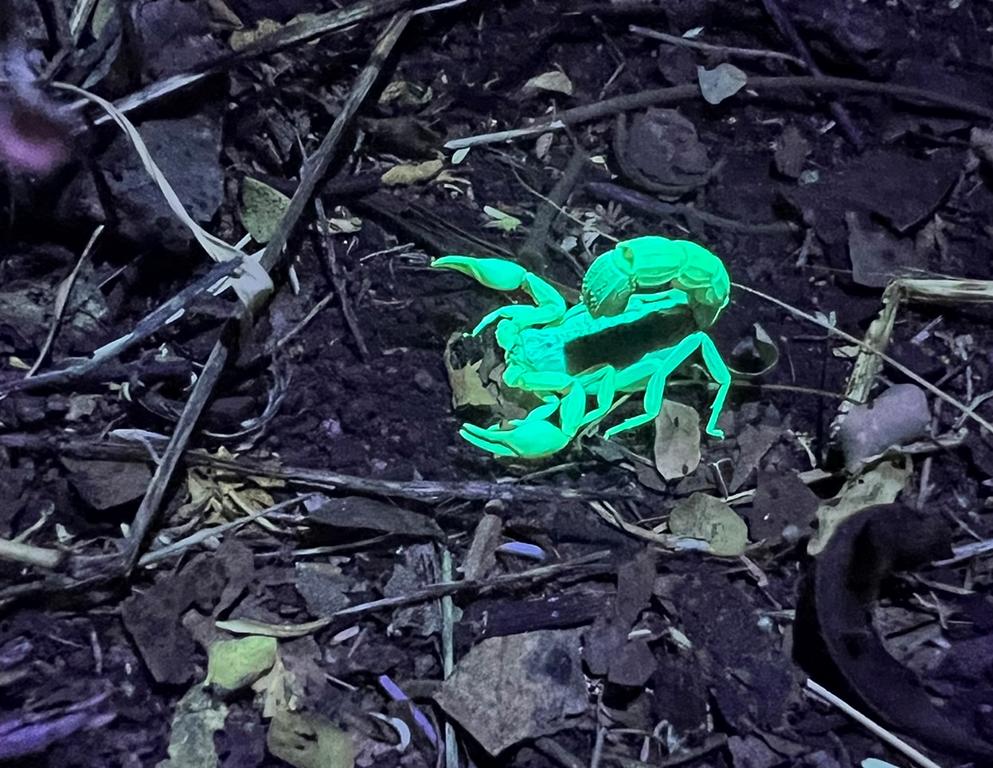

Although both scorpions were quite small, thick tales and small pincers are always a matter of concern. My immediate reaction was—Parabuthus! However, their size was too small, and they were not aggressive enough to be Parabuthus granulatus or a similar species. Only later, when I had a connection to the internet again, did we find that these were Hottentotta trilineatus scorpions. This species is at a level lower in dangerousness than my initial suspicion.
Description of Hottentotta trilineatus scorpions
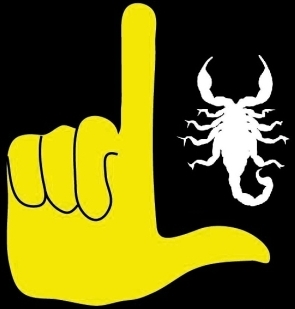
The common English name of this species is Eastern Nomad, and its total length ranges between 35 and 65 mm.
Males have wider pincers and tail segments than those of females. Their overall color is uniformly yellow to reddish brown. The segments at the body’s middle part and carapace (head shield) usually have orange spots and longitudinal black stripes. All raised linear ridges are granulated, and dorsal ridges bear terminal granules. In males, granules are usually larger and more pronounced than in females.
.
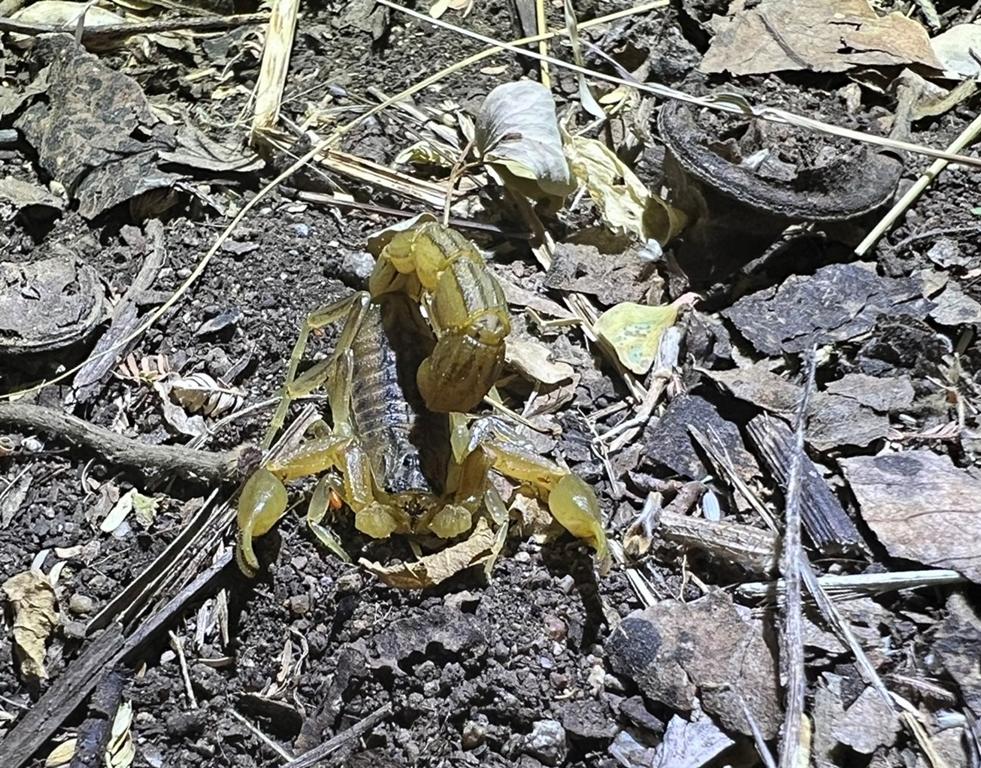
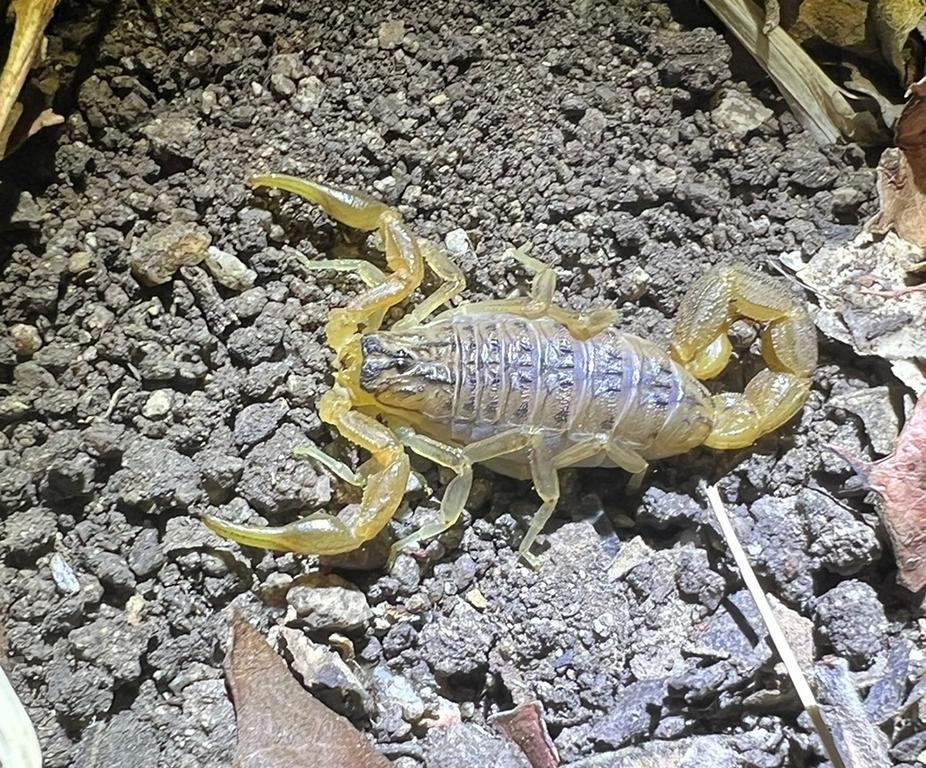
The most striking features of Hottentotta scorpions are three raised linear ridges on top of the middle body segments and a row of dark spots on the sides of the lower body segments. A dark X-pattern can be seen on the carapace, with the median eyes in the center.
Distribution
The Hottentotta trilineatus scorpion species occurs in the eastern parts of Africa, from Ethiopia to the northern parts of the Limpopo province in South Africa. Its distribution range is shown in yellow on the map below. This species occurs throughout Tanzania, except in the western parts of Serengeti.
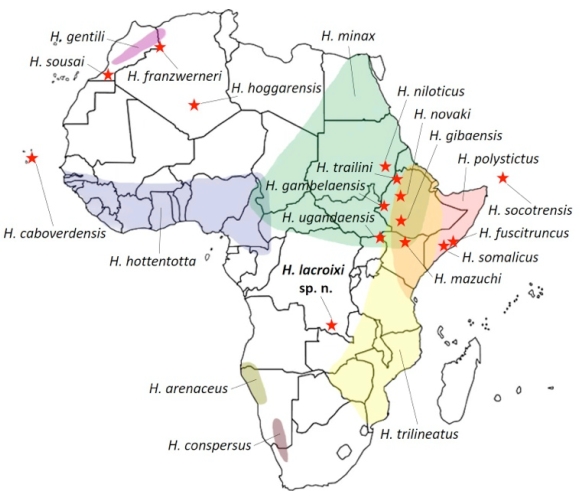
Medical importance
The Hottentotta genus has a potent neurotoxic venom. Although not as medically important as the Parabuthus genus, getting treatment for the pain is also important, as it packs a very painful sting. It is best to keep the affected area still and seek medical treatment for pain and other symptoms that might occur. Ice should be avoided for cooling, making the area even more hypersensitive. Also, heat treatment and antihistamines have no effect on the venom. And no antivenom is effective against the sting of this species.
Lessons learned from Hottentotta trilineatus scorpions:
- In Africa, small-sized scorpions with thick tails and slim pincers often belong to the Hottentotta genus.
- Walking during nighttime in natural surroundings should only be done with closed shoes and a UV light.
- Stings of Hottentotta trilineatus scorpions will need medical attention due to their painful action.
- Ice- or heat-packings and antihistamines should be avoided for treatment.
Additional information
My book ‘Hadzabe Survival Skills‘ offers more skills, knowledge, tools, and techniques for the Hadzabe people’s life in their natural environment. It is available on Amazon.com and Amazon’s regional websites.
.



